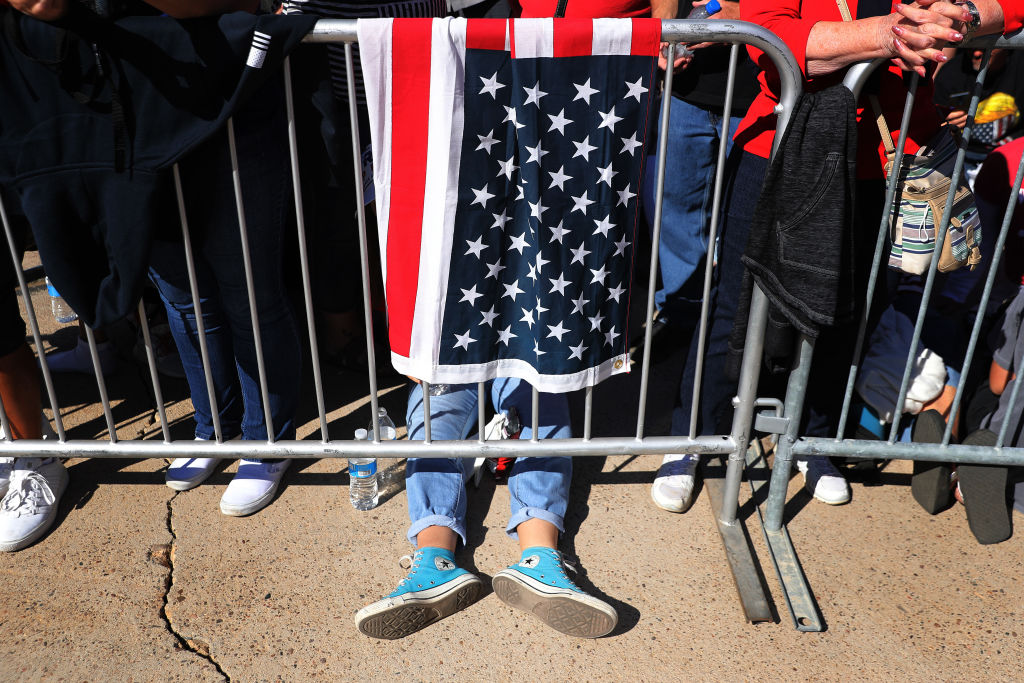In the final stretch of the campaign, Democratic presidential candidate Joe Biden has sought to puncture Donald Trump’s claims of being a champion of working people by referring to the president’s ties to Park Avenue and emphasizing his own Scranton, Pennsylvania, roots.
“I’ve dealt with guys like Donald Trump my whole life, who would look down on us because we didn’t have a lot of money or your parents didn’t go to college,” Biden said last month at a campaign event in Manitowoc, Wisconsin, a small town north of Milwaukee.
Analysts who sling data for a living have poked holes in Trump’s economist populist claims by other means. Two recently published reports by the D.C.-based Economic Policy Institute reveal that middle and working class Americans – including those living in regions of the country that swung for Trump in 2016 – saw slower wage and income growth under his presidency than they did in the years leading up to it, even before the COVID pandemic arrived on U.S. shores.
Annual pay grew more slowly in counties that voted for Obama twice but then voted for Trump in 2016, according to a recent EPI report.
The first EPI analysis of U.S. Census Bureau survey data, published earlier this month, shows that median household income grew at a slower pace – by an annual average of 2.1% – during the president’s first three years in office compared to the last three years of Obama’s presidency when annual average income growth was 2.6%. (Capital & Main published an analysis earlier this month of another U.S. Census Bureau survey showing that median household income growth was slower in 26 of the 50 states during Trump’s first three years in office – 2016 to 2019 – when compared to the three years leading up to his presidency, 2013 to 2016.)
The second EPI report showed that, under Trump, annual pay also grew more slowly in counties that voted for Obama twice but then voted for Trump in 2016. In fact, the average annual wage growth during the Obama presidency was nearly twice that of the Trump presidency in the counties that swung for Trump.
“There are a lot of things that the administration and Congress could have done to stop that slowdown from happening. And these are tried and true solutions in terms of economic development,” says Ben Zipperer, an economist with the EPI. Zipperer cites investments in infrastructure, public sector jobs and income support programs like food stamps and the Earned Income Tax Credit as examples. He called the 2017 tax cut a “wildly inefficient” way of generating development since wealthy people are least likely to spend money. The tax breaks did not lead to the promised uptick in business investment, according to an earlier analysis from EPI.
Still, Trump’s defenders maintain that his pre-pandemic economic stewardship justifies their continued support of the president’s economic policies, whatever they make think of his inflammatory governing style. “If Republicans want to keep these voters in their camp going forward, continuing a Trump-like approach to the economy will be imperative,” Alan Tonelson, of the RealityChek blog, wrote this month in The American Conservative after analyzing wage growth in counties that swung for Trump.
77% of swing counties in swing states saw faster wage growth during the last three years of Obama’s presidency than they did in Trump’s first three years.
The EPI analysis rebuts those claims and shows that swing counties actually saw greater growth in average earnings under Obama than under Trump when inflation is taken into account. Real average wage growth was also higher under Obama in other counties, although the difference was not as great.
Worse for the president politically, 77% of swing counties that are located in the 13 swing states identified by The Cook Political Report saw faster wage growth during the last three years of the Obama administration than they did in the first three years of the Trump administration, according to a Capital & Main analysis of EPI’s data.
Nonetheless, EPI researchers do attribute “pockets of strength” to the Trump economy. The low unemployment rates before COVID led low wage workers finally to see wage increases. But they don’t give the Trump administration any credit for an economic expansion he inherited from Obama. Meanwhile, state-level initiatives led to increases in the minimum wage, which Trump opposed at the federal level. One institution deserving of praise: the Federal Reserve, which showed “forbearance” in keeping interest rates low, according to Zipperer and report co-author Josh Bivens.
Trump, meanwhile, has worked to “wreck any institution or labor standard that gives typical workers leverage or bargaining power,” they wrote.
It’s hard to say what this data will mean with polls closing in just a matter of days and the country facing an economic crisis from a pandemic now in its third wave. But if Trump loses, the economic plight of voters in swing counties may draw a lot of scrutiny long after Election Day.
Copyright 2020 Capital & Main
Top photo: Supporters wait for the arrival of President Trump during a campaign rally at Phoenix Goodyear Airport October 28 in Goodyear, Arizona. Photo by Chip Somodevilla/Getty Images.




